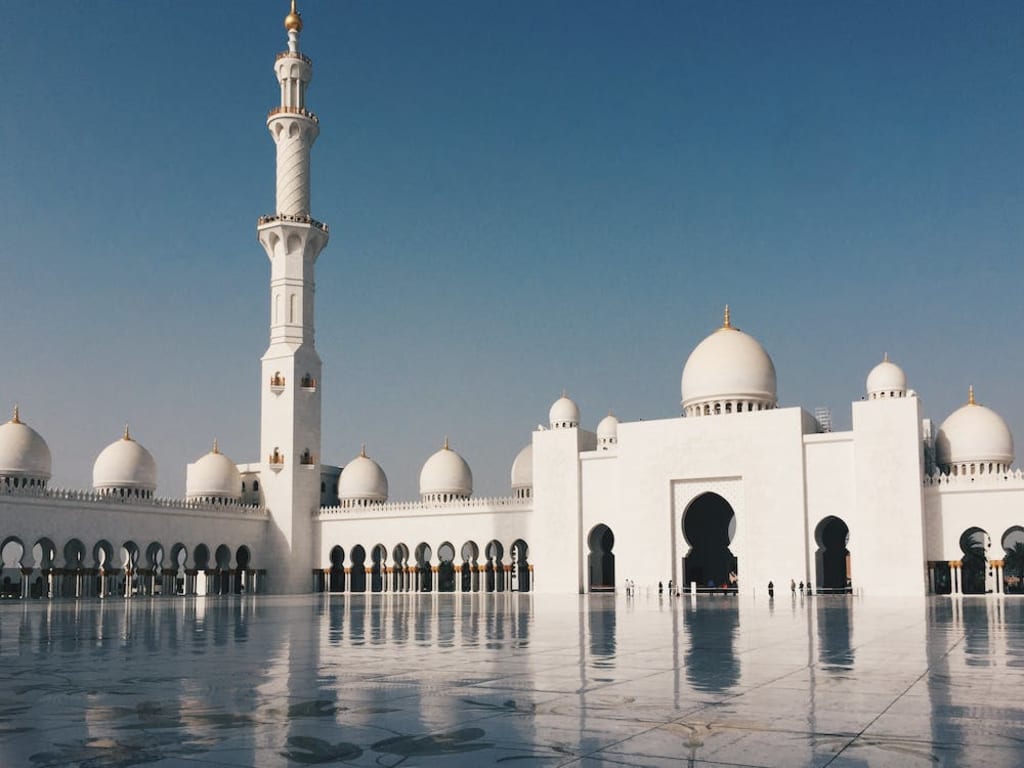
Islam History
In late antiquity, no one could have imagined that a vast civilization would emerge from the desert
desert landscape of the Arabian Peninsula would emerge. But after extensive conquests,
Caliphs and sultans ruled vast empires - through eras of prosperity and disaster.
This is a millennium of Islamic history - focusing on the heartland of the Middle East.
In the 6th century, the Arabian Peninsula was the backyard of great empires - the Persian
Sasanian Empire to the east and the Christian Byzantine Empire to the west. The Arab inhabitants
of the peninsula were an ethnic and cultural group consisting mainly of nomadic tribes.
Most of them were polytheists - they worshipped many deities. This was about to change.
Around 570 CE Muhammad was born in the city of Mecca.
According to Muslim tradition, he was chosen by God to be the last prophet in a series
of a series of prophets - including Abraham, Moses and Jesus. Muhammad was to establish monotheism in
monotheism in its true form among the Arabs. According to tradition, the Koran was revealed over many years
revealed to the Prophet in sections and later compiled into the central book of Islam.
At first, Muhammad was persecuted. However, after his transfer to the city of Medina, an event which
marking the beginning of the Islamic era - he shaped the new religion, consolidated the Muslim
community, waged wars against idolaters, and united the Arab tribes into a Muslim nation.
Muhammad died in 632, and it was a time of crisis - who would succeed the religious leader?
social, political and military leader? The question of rightful leadership will remain a central issue in the Islamic world for all time.
Muhammad's heirs introduced the title caliph, which means "successor.
The first four caliphs, known as "rashidun" or "rightly guided caliphs," were elected one after the other
selected on the basis of their attachment to the Prophet andtheir personal qualities. They were in power for 30 years.
During this time, the first Muslim state emerged - with institutions, taxes and bureaucracy.
The caliphs conducted military campaigns and expanded the caliphate from Iran to North Africa in a rapid, colossal process.
The Byzantine Empire lost many territories, and the Sasanian Empire collapsed.
Muslim tradition considers the Rashidun period as the glorious days of Islam. However,
however, it was marked by acute internal tensions, and three of the four caliphs were assassinated.
In particular, the followers of Ali ibn Abi Talib came under pressure,
Muhammad's cousin and son-in-law. This group, which became known as the Shiites,
claimed that Muhammad had appointed Ali as his successor and therefore he and his descendants were the only legitimate rulers. On the other hand,
their opponents, later known as Sunnis, did not recognize this appointment.
In the course of time, the political division will develop into the biggest religious division in Islam.
In 661, the Umayyads, an Arab family that settled in Syria, came to power and ruled for 90 years.
The Islamic capital was moved from the Arabian Peninsula to Damascus.
The new authority brought with it a new political system: a dynasty in which the office of caliph is inherited from father to son.
The Umayyad dynasty led the second wave of conquests and established an empire that stretched from Central Asia to the Iberian Peninsula.
The defeat of the Muslims by the Frankish forces at the Battle of Tours marked the end of the Muslim
expansion into the West and prevented the Islamization of Western Europe.
Caliph Abd al-Malik sought to centralize power in Damascus, strengthened the empire's Arab identity, and expanded its administrative system,
and initiated building projects-most notably the Dome of the Rock in Jerusalem.
However, social and political divisions, rebellions and civil wars shook the
Umayyad caliphate. In the Battle of Karbala, the Umayyads assassinated Ali's son,
dealing a resounding and defining blow to the Shiites.
In the mid-8th century, the various oppositions to the ruling power coalesced into a military force that brutally massacred the Umayyad family.
Out of the chaos, the Abbasid dynasty came to power in 750.
This was a Sunni Arab family that was proud of its descent from Abbas, Muhammad's uncle.
The period of turmoil had come to an end. The rule of the Abbasid caliphs lasted for more than five hundred years.
Immediately after coming to power,the Muslim troops won the battle of Talas against
chinese Empire, ending the advance in the east. The Abbasids ceased
the Abbasids ceased their policy of expansion and turned their gaze inward, to the building of the caliphate.
They moved the capital from Damascus to a new city they had built: Baghdad. It soon became known as the
largest and most modern
About the Creator
Enjoyed the story? Support the Creator.
Subscribe for free to receive all their stories in your feed. You could also pledge your support or give them a one-off tip, letting them know you appreciate their work.





Comments
There are no comments for this story
Be the first to respond and start the conversation.